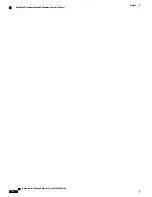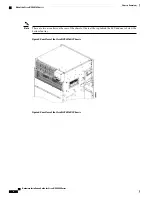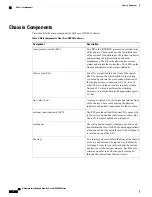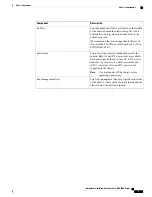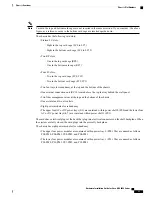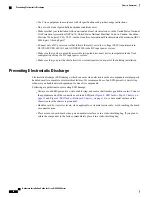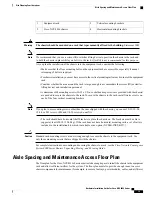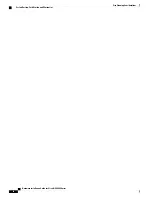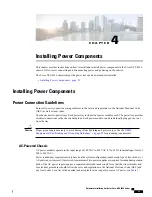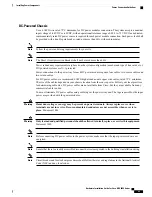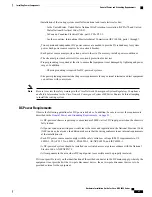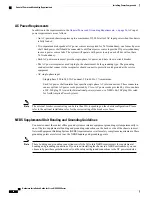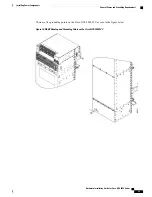
•
Use Cisco equipment in accordance with its specifications and product-usage instructions.
•
Do not work alone if potentially hazardous conditions exist.
•
Make sure that your installation follows national and local electrical codes: in the United States, National
Fire Protection Association (NFPA) 70, United States National Electrical Code; in Canada, Canadian
Electrical Code, part I, CSA C22.1; in other countries, International Electrotechnical Commission (IEC)
60364, part 1 through part 7.
•
Connect only a DC power source that follows the safety extra-low voltage (SELV) requirements in
UL/CSA/IEC/EN 60950-1 and AS/NZS 60590 to the DC input power system.
•
Make sure that you have a readily accessible two-poled disconnect device incorporated in the fixed
configuration wiring of a DC input power system.
•
Make sure that you provide short-circuit (overcurrent) protection as part of the building installation.
Preventing Electrostatic Discharge
Electrostatic discharge (ESD) damage, which can occur when electronic cards or components are improperly
handled, results in complete or intermittent failures. We recommend use of an ESD-preventive wrist strap
whenever you handle network equipment or one of its components.
Following are guidelines for preventing ESD damage:
•
Always use an ESD-preventive wrist or ankle strap, and ensure that it makes good skin contact. Connect
the equipment end of the connection cord to an ESD jack (
Top of Chassis, on
page 15
and
Bottom of Chassis , on page 16
) or a bare metal surface on the
chassis (ensure the chassis is grounded).
•
Handle a card by its ejector levers, when applicable, or its metal carrier only; avoid touching the board
or connector pins.
•
Place a removed card board side up on an antistatic surface or in a static-shielding bag. If you plan to
return the component to the factory, immediately place it in a static-shielding bag.
Hardware Installation Guide for Cisco NCS 4000 Series
14
Chassis Overview
Preventing Electrostatic Discharge

